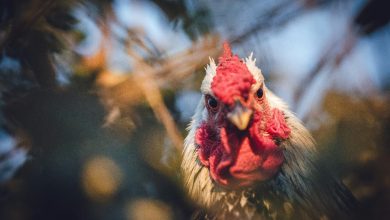Poultry hatchery hygiene and its management
Dr.Shaitan Singh, Dr.K.Karuppasamy MVSc scholar, Dr.Chongthem Sonia, Dr.Vinay Singh PhD scholar, Poultry Science, Central Avian Research Institute, Izatnagar-243122
Introduction : The hatchery is a central place where the hatching egg is transformed into a one day old chick, during 21 days. The environment of a poultry hatchery is very susceptible to contamination by microorganisms which can adversely affect hatchability of the eggs and can result in embryonic deaths. Streptococcus species, E. coli, Staphylococcus species, Pseudomonas species and Aspergillus fumigates are mainly isolated from hatchery and it adversely affects chick quality and cause embryonic deaths. Poor standards of hatchery hygiene may lead ultimately to an explosion of pathogenic organisms resulting in severe economic loss. Hence hatchery hygiene is an important factor in healthy poultry production.
Source of contamination : Eggs: Even eggs look like clean in appearance it may carry thousands of bacteria. One rotten egg which explodes in the setter or hatcher has the capacity to contaminate many other eggs or chicks, trays, tray carriers, trollies and fans. Contaminated eggs will lower the hatch and produce chicks with poor livability and growth.
Air: The air supply can introduce microorganisms to the hatchery. Improper design hatchery recycles its own waste air which is heavily contaminated with chick fluff.
Water: Water can be an important source of contamination which are used to maintain humidity in setter and hatcher by spray .
People: Employees and visitors can introduce infection to a hatchery from farms, other hatcheries, other poultry or livestock farm.
Rodents and birds:
They are natural carriers of Salmonella and can spread in the hatchery.
Equipment: Improper cleaning and maintenance of equipment lead to sources of contamination in the hatchery.
Consequences of contamination
• Low hatchability
• Poor chick quality
• Embryonic mortality
• Poor growth rate
•High disinfectant costs
• High labour costs
HATCHERY HYGIENE: Hygiene at the layer farm Hatchery hygiene begins at the layer farm. As the eggs are laid they are quickly challenged by microbes found on the floor, litter, droppings. Transfer of eggs with unsanitized hands to contaminated trays or cartons, adds to the microbial load on eggs. Rough handling of eggs added possibility to crack shells and accessing of microbes inside. Presence of rodents, birds, flies and other insects may also contaminate the eggs.
Recommendations:
• Use only disinfectants chemically compatible with the cleaning product.
• Washed with alkaline products (based on potassium hydroxide), to remove mainly fat and protein
• The water should be warmer than the egg contents throughout the cleaning
Hatchery design: The layout and infrastructure of a hatchery have a strong influence on the efficacy of the hygiene measures. A normal hatchery contains egg storage room, fumigation room, setter room, hatcher room, chick room and store room. Hatcher room, chicks room and wash room are dirty areas of the hatchery and most of contamination spread from these areas.
Recommendations:
• Strict separation of hatchery clean and dirty zones.
• Proper hand washing facilities and foot dips at the entrance.
• All movement should go from the clean (eggs) zone to the dirty (chicks) zone not reverse • A positive air pressure maintain in the clean zone.
Hatcher and Setters hygiene: Eggs are incubated 21 days (18 days in setter and 3 days in hatcher). A specific Temperature and humidity are maintained in both to provide ideal conditions for incubation. These conditions are also optimal for growth of many pathogenic microorganisms. Better hygiene and cleaning program can prevent the growth of these microorganisms. Cleaning is most critical part of hatchery hygiene. Removal of organic debris is the best way to keep the microbial load to a minimum.
Recommendations:
• Remove all the typical debris
• Cleaning should be done with a universal cleaner
• After cleaning, rinse with water and allow to dry
• Use disinfection that covers a broad spectrum with residual action
• Fumigation with formaldehyde cannot be done between 24 and 96 hours of embryonic development due to its carcinogenic nature.
Chick room and wash room biosecurity
• All equipment (Trays, crates and baskets) washed with alkaline detergents
• Temperatures should be higher (50-60°C), but not so high as to damage the plastic.
• Use acid, non foaming detergent to remove mineral deposits (limescale) Chick distribution
• Chicks should be placed in new boxes containing unused chick papers or chick pads.
• Vehicles and equipments used for transporting chicks for distribution should be cleaned and disinfected after each use.
Persons hygiene :
• Wash hands with soap and water before handling eggs and chicks.
• Use outerwear and boots in hatchery.
Monitoring of hatchery hygiene: Routine microbiological assessment of the hatchery is necessary to monitor the hygiene status of hatchery and it can best done by assessing air quality in different area of hatchery including setter and hatcher (air exposure plate method) and by swab sampling of surface area and culturing on trypticase soy agar (or blood agar) and MacConkey agar plates and Sabrourade Dexrose Agar. Assessing microbial load on fluff sample can also give the view of hatchery hygiene. It helps in
• Implementation of best cleaning and disinfection program
• To ensure the use of best disinfectant at in the hatchery
• To find out point of contamination in the hatchery
Conclusion: Implementation of the hygiene program in a hatchery is not only sufficient to ensure to produce a healthy chicks but also is fallow in breeding farm, broiler farm, processing unit, transport. All the person who involve in this process should be aware of all measures, facts and procedures of hygiene. A collective approach is the only way to ensure best hygienic condition in the hatchery.
Reference: David D. Frame . 2010. Poultry and Game Bird Hatchery Sanitation and Biosecurity .Agriculture extension Utah State University Ernst, R. A., J. Glick-Smith, and A. A. Bickford.1986. Microbiological monitoring of hatchery and hatching egg sanitation. Progress in Poultry Through Research, No. 33. Cooperative Extension – University of California Ledoux, L. 2006. Hatchery hygiene: more than cleaning cabinet.World poultry vol 22 no.5




